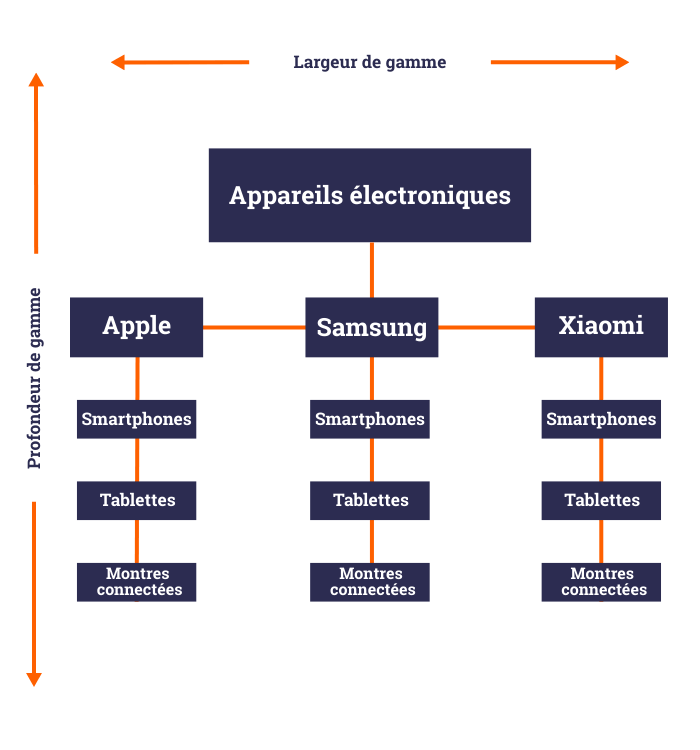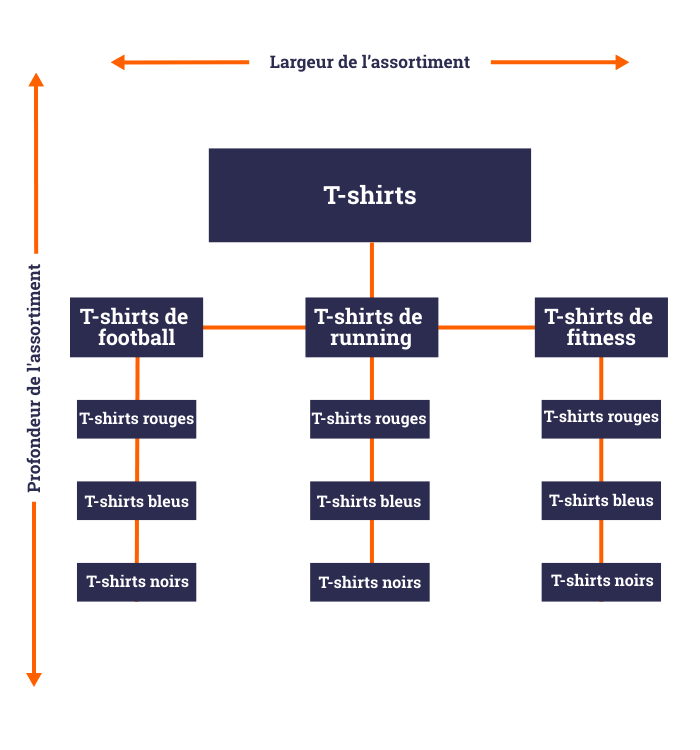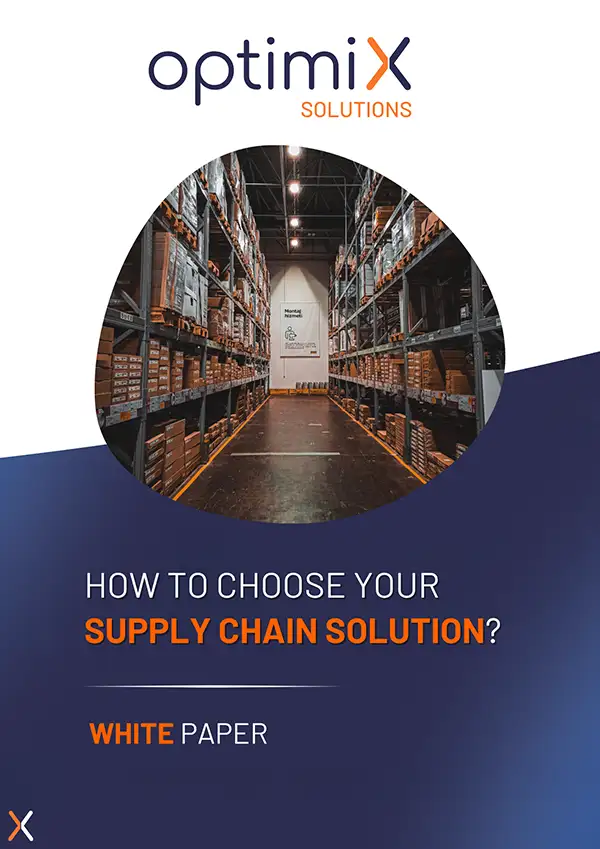For offer managers, mastering the distinction between range and assortment is essential to steering an effective product strategy in line with corporate objectives. These two concepts, often used interchangeably, nevertheless respond to distinct logics.
The range represents the overall structure of the offer: it embodies strategic choices in terms of positioning, segmentation and market coverage. The assortment, on the other hand, translates this architecture into operational terms, by selecting the references actually available for sale, according to channels, geographical zones or customer typologies.
Assortment analysis enables the various offer managers (marketing, merchandising, category management) to fine-tune the depth and breadth of the offer, identify gaps between strategy and reality on the ground, and adjust choices according to performance, customer expectations and operational constraints.
Understanding and articulating these two levels enables us to optimize the depth of our offering, better meet consumer expectations and boost profitability.
This article explores the criteria for differentiation, the common mistakes to avoid and the levers to activate to build a coherent, agile and high-performance offering.
Why distinguish between range and assortment?
Distinguishing clearly between range and assortment is crucial for several reasons. On the one hand, it aligns product strategy with operational execution.
The range defines the brand’s identity and positioning, influences customer segmentation and guides product development. The assortment, on the other hand, adjusts the offer to local constraints, seasonality and buying behavior.
Poor distinction can lead to a blurring of the offer, directly impacting customer satisfaction and margins. Effective management, on the other hand, makes it possible to offer coherent, attractive products, boost loyalty and stimulate the average basket.
This distinction is also essential for supply chain management, as it enables volumes and frequency of replenishment to be adapted to the actual performance of each reference.
What is the product range?
The product range corresponds to a structured set of items sharing a commercial or functional logic. It reflects the company’s strategy and market positioning. For example, a range of organic energy drinks targets a specific segment of consumers and communicates the value of the brand.
The range also structures the development of new products, promoting complementarity between references and anticipating market needs. It plays a key role in building customer loyalty, by offering a perceptible coherence to the customer, and in the strategic management of company resources. A well-defined range facilitates segmentation, targeted marketing and decisions on future extensions or reductions.

What is an assortment?
The assortment represents the set of references actually available at a given time in a sales outlet or on an e-commerce site. Unlike the range, which is strategic and global, the assortment is operational and must take account of demand, logistical constraints, stock rotation and seasonality.
A well-calibrated assortment enables us to meet concrete customer needs, avoid overstocking or out-of-stock situations, and optimize operational management. It translates the strategy defined by the range into concrete actions. Assortment choices have a direct impact on sales, customer satisfaction and supply chain performance.

Range and Assortment: What are the elements of differentiation?
The distinction between range and assortment is based on several essential criteria that enable companies to effectively manage their product offering and make informed decisions. Understanding these criteria is essential to avoid positioning errors and optimize sales performance.
Scope and availability
The range corresponds to the global vision of the offer. It defines target market segments, product categories and strategic development axes. For example, a beverage brand may have a range comprising energy drinks, detox drinks and functional drinks.
The assortment, on the other hand, represents the references actually available in a sales outlet or on an e-commerce platform. It adjusts the range according to local demand, seasonality and logistical constraints. This means that two outlets belonging to the same brand may have the same range perimeter, but different assortments.
Strategic and operational level
The range is a high-level decision, focused on sales strategy, positioning and differentiation. It defines which product categories to develop and how to communicate the global offer.
The assortment translates this strategy into concrete action: which products to offer, in what quantities and at what times. For example, a cosmetics range may include all anti-aging lines, but the assortment in a specific boutique may be limited to the products most in demand in that geographical area.
Consistency and adaptability
The range guarantees the homogeneity of the offer and the consistency of the brand across all markets. It serves as a benchmark for marketing and sales teams, and helps build customer loyalty.
Assortment, meanwhile, needs to be adaptable and responsive, adjusted to actual sales, trends and buying behavior. This flexibility is particularly critical in e-commerce environments, or in retailers with rapid product turnover, where a poor assortment can lead to stock-outs, overstocking or lost sales.
Impact of range and assortment on supply chain and inventory management
Range selection influences strategic decisions on new product development, production planning and marketing investments. Assortment, on the other hand, has a direct impact on the supply chain and logistics flows.
A well-calibrated assortment optimizes stock levels, reduces storage costs and minimizes unsold stock. Conversely, an assortment that is too wide or badly adjusted can create inefficiencies, lengthen replenishment lead times and complicate operational management.
Performance analysis and tuning
Performance must be assessed at two levels: the range, to measure overall strategic relevance, and the assortment, to identify the references that really generate sales.
Assortment analysis tools such as XAB-Optimix Assortments Benchmarks make it possible to centralize this data, compare performance between outlets and decide on assortment adjustments without calling into question the overall consistency of the range.
The range defines the strategic vision of the offer, while the assortment gives concrete expression to its implementation in the field. Mastering this distinction is essential for maximizing sales performance and guaranteeing optimal management of inventory and logistics flows.
Range VS Assortment: How to choose according to your objectives?
The choice between range and assortment depends on sales strategy and specific objectives:
- To build customer loyalty, it is necessary to guarantee consistency in the range, while offering a sufficiently deep assortment to ensure the availability of flagship products.
- To optimize inventories and control logistics costs, a selective, targeted assortment reduces slow-moving items while maintaining an attractive offering.
- When testing new segments or adapting to trends, expanding the range while adjusting the assortment according to actual performance offers flexibility and responsiveness.
Analytical solutions, such as XAB – OptimiX Assortment Benchmarks, provide reliable data on SKU performance and enable assortments to be adjusted in line with actual demand, guaranteeing consistency between strategy and operations.
Common mistakes and best practices
In product management, confusing range and assortment is a common mistake that can have a direct impact on sales performance and supply chain efficiency. For example, some companies choose too wide an assortment without taking into account storage capacity or product rotation, resulting in overstocking, high logistics costs and complex order management.
Conversely, too narrow an assortment risks failing to meet customer expectations and limiting sales, even if the strategic range is well defined.
Another common mistake is to neglect the alignment between range and assortment over time. Markets evolve rapidly, and static assortment choices can render the offer obsolete or inadequate in the face of new trends, seasonality or changing buying behavior. The absence of regular monitoring and analysis of performance can also limit the ability to identify high value-added products and those with low turnover.
To avoid these pitfalls, we recommend adopting the following best practices:
- Regularly analyze sales and demand to adjust the assortment in line with actual performance, while respecting range objectives.
- Segment the offer according to customer and distribution channel, to ensure the relevance of the products offered in each point of sale or e-commerce platform.
- Plan for and anticipate seasonal variations or market trends, using analytical tools to identify opportunities and reduce the risk of shortages or overstocking.
- Maintain a balance between breadth and depth of assortment, ensuring that each SKU contributes to overall range strategy and customer satisfaction.
- Choose a solution that will enable you to analyze your offer and that of your competitors. Analyzeperformance, compare SKUs and make informed decisions. These tools help you optimize your assortment according to actual sales and demand data, while respecting the range strategy defined by the company.
By adopting these best practices, companies can limit classic errors, improve the relevance of their offer and strengthen their competitiveness in the marketplace, while ensuring efficient management of inventory and logistics flows.
Case studies in assortment analysis
Assortment, as a strategic lever, varies greatly according to sector and distribution model. Its adaptation to the operating context and customer expectations is crucial to sales performance.
Specialized retailing (DIY, sports, cosmetics) These chains focus on narrow but deep assortments, centered on business expertise. This approach reinforces the brand’s legitimacy, establishes an expert image and enables it to respond precisely to the needs of discerning customers. Optimizing the assortment is based on the rigorous selection of high value-added products, often supported by category management teams.
In this model, the assortment is deliberately reduced and selective, designed to facilitate browsing, speed up order preparation and limit stock-outs. The logic is one of practicality and fluidity, with a narrow selection of fast-moving products that meet consumers’ essential needs.
E-commerce E-commerce illustrates the diversity of assortment strategies. Generalist platforms such as Amazon rely on extreme extreme breadth and depth to cover all segments and maximize conversions. Conversely, specialized sites opt for targeted targeted depthto consolidate their legitimacy in a specific niche (e.g. organic cosmetics, trail equipment, etc.). This complementarity underlines the importance of an assortment aligned with positioning, target expectations and logistical constraints.
These examples demonstrate that assortment is never static: it must be managed according to channel, sector, expected level of expertise and sales objectives. A detailed analysis enables us to identify optimization levers, rationalize the offer and reinforce the relevance perceived by the customer.
Understanding the difference between range and assortment is crucial to any successful product strategy. The range structures the offer and guides positioning, while the assortment adapts this strategy in concrete terms to customer needs, logistical constraints and market dynamics. Effective management relies on consistency between strategy and operations, flexibility to meet demand, and continuous analysis of performance.
Solutions such as XAB – Optimix Assortment Benchmarks provide a precise view of the performance of each item, and enable the assortment to be adjusted in line with trends and actual demand, thus guaranteeing a competitive, profitable offering tailored to the customer target.








